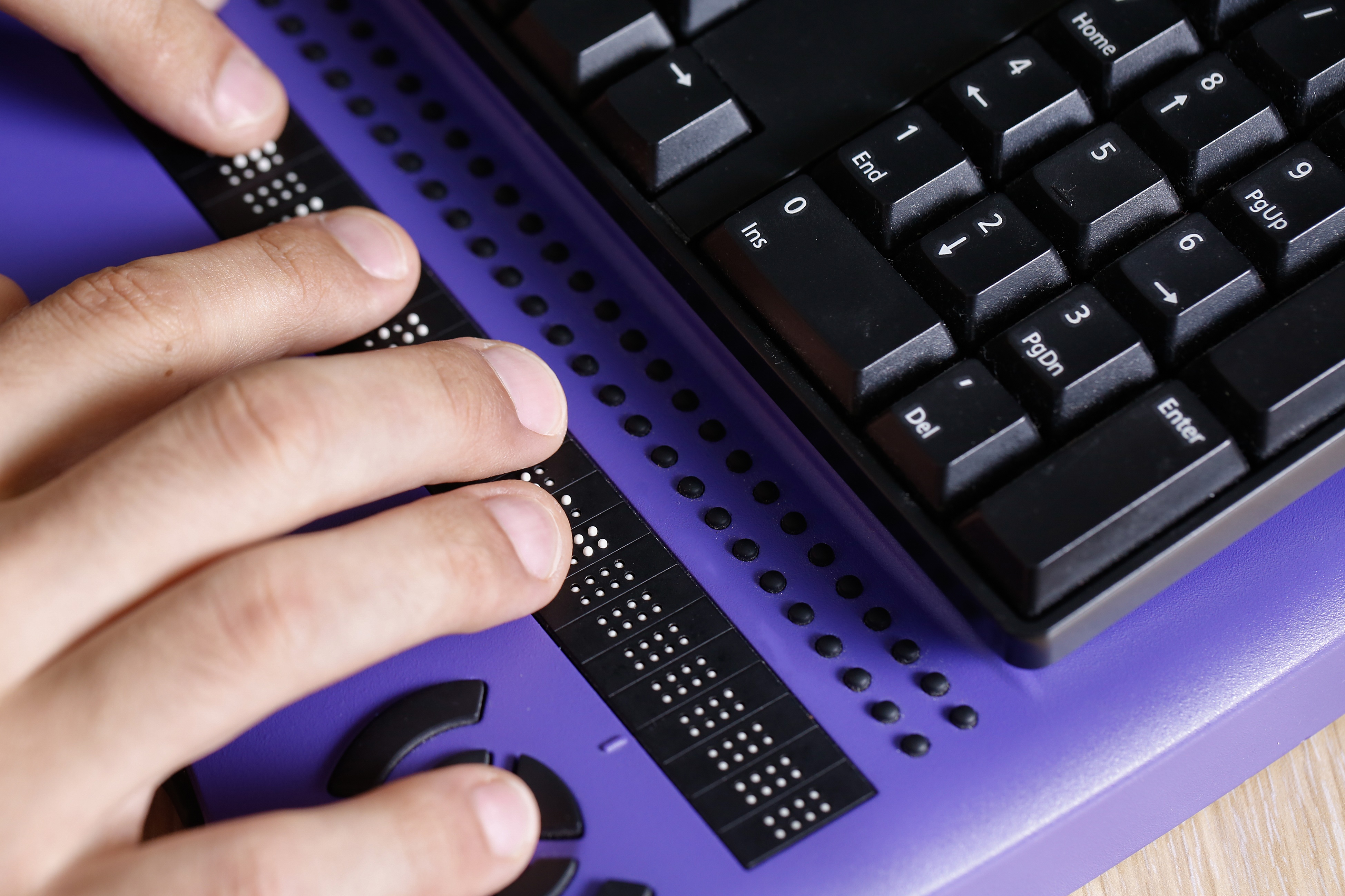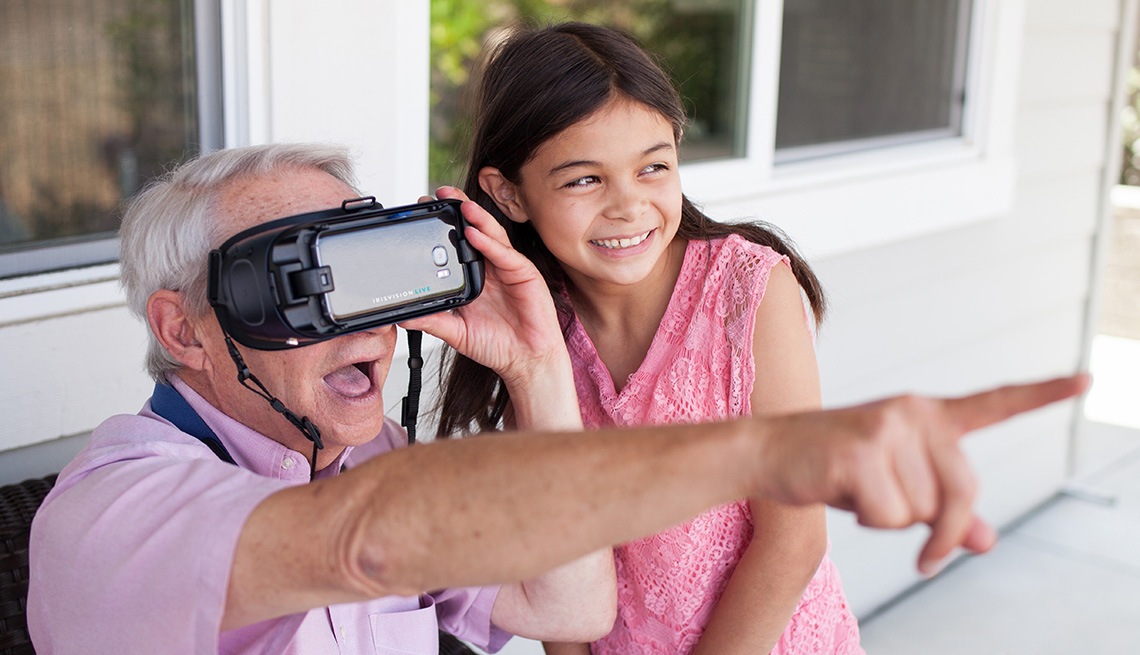Speech-to-Text Devices for Low Vision: Enhancing Convenience
Speech-to-Text Devices for Low Vision: Enhancing Convenience
Blog Article
Discover Cutting-edge Devices Created for the Aesthetically Impaired
The growth of ingenious tools for the visually damaged stands for a substantial innovation in accessibility and freedom. Technologies such as clever glasses with AI capabilities and mobile applications created to supply acoustic descriptions are improving day-to-day experiences for individuals. Furthermore, wearable gadgets that utilize haptic feedback enhance ecological awareness, while modern Braille technologies provide brand-new means to engage with message. As these tools remain to evolve, their influence on the lives of those with visual impairments increases important inquiries concerning the future of inclusivity and freedom in numerous aspects of life. What lies in advance in this technological landscape?
Smart Glasses for Navigation

Smart glasses designed for navigating are revolutionizing the means visually impaired people engage with their environment. These sophisticated gadgets utilize a mix of cam technology, expert system, and auditory comments to offer real-time information concerning environments. By using challenge detection systems, wise glasses can alert users to possible threats, making it possible for more secure mobility in both acquainted and strange settings.
The integration of GPS modern technology even more enhances navigating abilities, allowing individuals to get auditory directions as they move. This hands-free technique not only promotes freedom but likewise encourages visually impaired people to browse metropolitan landscapes with increased confidence. In addition, numerous wise glasses are outfitted with attributes that determine spots and road indicators, offering contextual info that improves the user experience.
In addition, the growth of these devices is consistently progressing, with firms functioning to enhance the accuracy of object acknowledgment and broaden the variety of navigational functions. As clever glasses end up being more inexpensive and obtainable, they hold the prospective to considerably change day-to-day live for aesthetically damaged users. Inevitably, these ingenious tools stand for an important action toward inclusivity, offering boosted movement and a higher sense of freedom for individuals browsing the world around them.

Mobile Apps for Daily Living
Just how can mobile applications boost the lives of visually impaired individuals? Mobile applications are transforming the method aesthetically impaired users browse their environments, manage day-to-day jobs, and accessibility details. These applications give necessary support via numerous functionalities, fostering self-reliance and boosting high quality of life.
Several ingenious mobile applications are designed specifically for day-to-day living. For example, applications like Be My Eyes link aesthetically damaged customers with sighted volunteers through video calls, permitting them to get real-time assistance with jobs such as reviewing labels or browsing unfamiliar spaces. Seeing AI, created by Microsoft, uses man-made intelligence to describe environments, checked out message, and determine objects, successfully transforming a mobile phone into a powerful tool for daily support.
Additionally, navigation applications tailored for the aesthetically damaged, such as Aira and BlindSquare, provide audio-based instructions and ecological information, enabling customers to traverse their surroundings safely and confidently. Beyond navigating and prompt help, mobile apps likewise support organization and job monitoring, with features that aid individuals establish reminders, produce to-do listings, and track appointments. In recap, mobile applications serve as essential sources, empowering aesthetically impaired people to lead even more independent and satisfying lives.
Wearable Technologies for Assistance
Empowerment with technology is progressively evident in the realm of wearable tools developed to aid visually impaired people. These innovative tools incorporate perfectly right into life, improving navigating and offering crucial feedback to individuals. Clever glasses outfitted with video cameras can acknowledge faces and check out text aloud, enabling individuals to engage even more confidently in social and expert settings.
One more remarkable advancement is the use of haptic comments systems in wearable gadgets. These systems make use of resonances or various other responsive signals to share details about the user's atmosphere, such as challenges or modifications in surface, boosting mobility and safety. Wearable innovations likewise consist of wristbands that link to mobile phones, signaling users to notifications through refined vibrations, thus enhancing connection without dependence on aesthetic hints.
As these innovations continue to evolve, they are not only boosting freedom for aesthetically impaired individuals but additionally cultivating a higher sense of inclusion in culture. By connecting the space between obstacles encountered in day-to-day living and the possibility for autonomy, wearable technologies offer as crucial tools in the pursuit for equality and empowerment for those with aesthetic disabilities.
Audio Summary Tools
Sound summary tools play an important role in boosting accessibility for aesthetically impaired people, offering them with the ability to involve with visual media. Voice-activated assistive devices. These tools supply narrated descriptions of key visual components in films, tv shows, and live efficiencies, guaranteeing that customers can fully understand the context and emotions communicated through visuals
Sound summary can be integrated right into different systems, including streaming solutions, cinema testings, and live cinema. Numerous preferred streaming services now consist of audio description as rimless glasses an accessibility function, allowing customers to pick it easily. Along with mainstream media, specialized apps additionally exist, providing audio descriptions for art events, museums, and various other social occasions.
The effectiveness of audio summary rests on the ability of the narrators, who need to convey visual information succinctly without interfering with the original audio. Advancements in this field are also paving the method for even more personalized experiences, where users can readjust the degree of detail and pacing according to their preferences.
Braille Innovations and Tools
Braille devices and technologies have significantly changed the way aesthetically damaged individuals engage with text and details. Modern advancements have resulted in the development of versatile devices that boost literacy and freedom among individuals. Notably, Braille show innovations have progressed, permitting vibrant analysis experiences. These devices transform digital message into Braille, enabling individuals to access a huge variety of info on computers, eye associates smart devices, and tablets.
Furthermore, portable Braille notetakers combine standard Braille input with modern functionalities, facilitating note-taking, organizing, and record editing and enhancing on the move. AI-powered visual aids. These portable devices often feature text-to-speech abilities, bridging the void in between Braille and acoustic details
In addition, innovative Braille printers have arised, permitting users to produce Braille labels, documents, and academic materials efficiently. This access cultivates better participation in professional and instructional atmospheres, eventually advertising inclusivity.
Furthermore, research study right into wise Braille modern technologies proceeds to expand. Devices that incorporate man-made intelligence are being explored to give real-time navigating support and contextual info, boosting the user experience in varied setups. Generally, these innovations mirror a commitment to encouraging aesthetically damaged individuals via modern technology, ensuring they can easily access and involve with the world around them.

Verdict
The innovation of cutting-edge tools for the visually impaired substantially improves freedom and quality of life. Smart glasses, mobile applications, wearable modern technologies, audio summary devices, and Braille developments collectively encourage individuals by offering important navigating help, ecological awareness, and enhanced analysis experiences. These innovations not just foster greater inclusion but additionally promote freedom in day-to-day activities, ultimately contributing to a more fair and accessible society for aesthetically impaired people. Continued advancement in this field holds assurance for further enhancements.
As clever glasses become extra affordable and easily accessible, they hold the potential to significantly transform everyday life for aesthetically damaged customers. Mobile applications are changing the method aesthetically damaged users browse their environments, manage everyday jobs, and accessibility details. Apps vision care center like Be My Eyes link aesthetically impaired customers with sighted volunteers by means of video calls, permitting them to receive real-time help with jobs such as reading labels or browsing unknown rooms.Furthermore, navigating apps customized for the visually damaged, such as Aira and BlindSquare, supply audio-based directions and ecological information, making it possible for individuals to traverse their surroundings safely and confidently.The improvement of innovative tools for the aesthetically damaged dramatically enhances independence and high quality of life.
Report this page